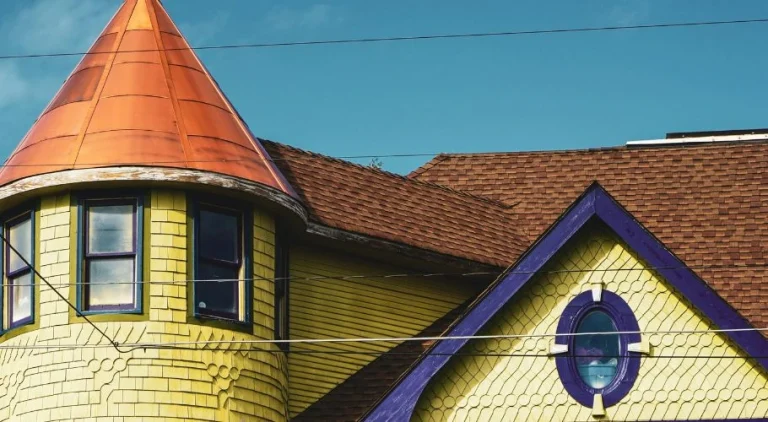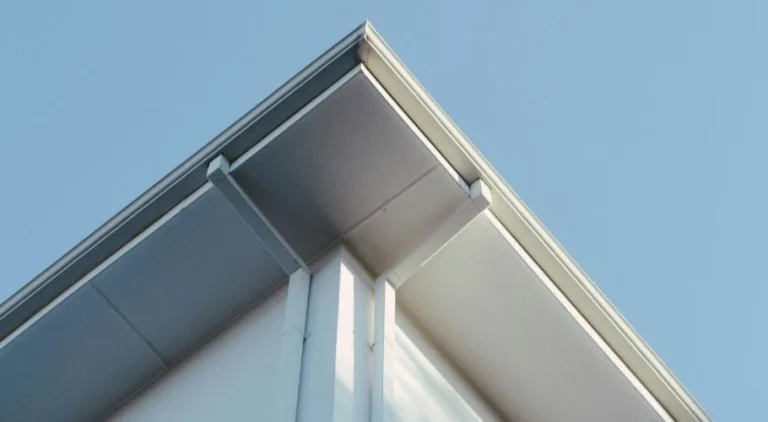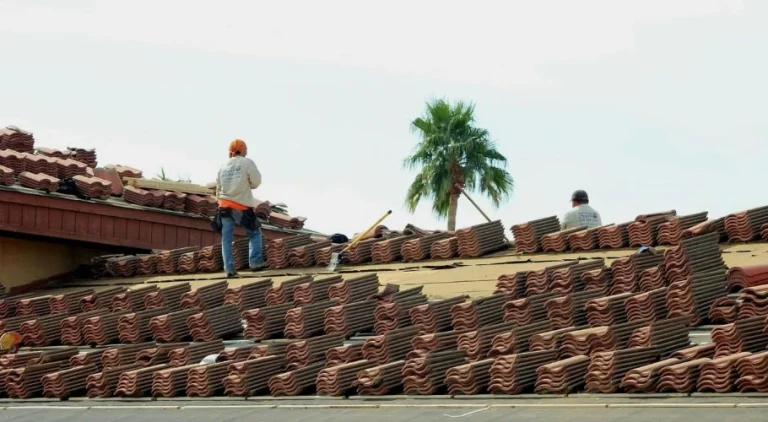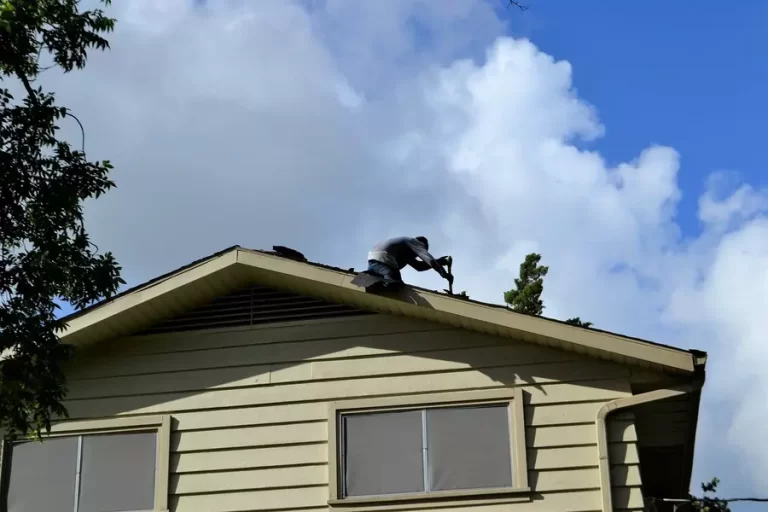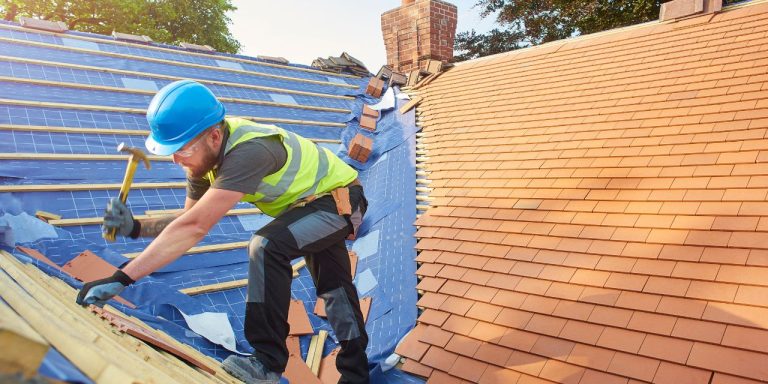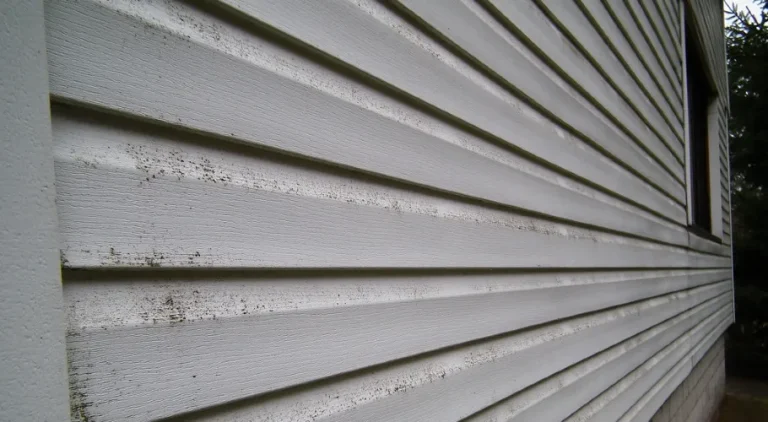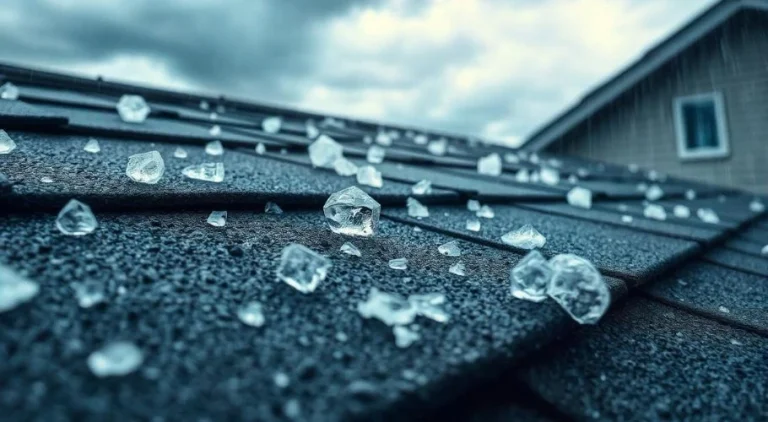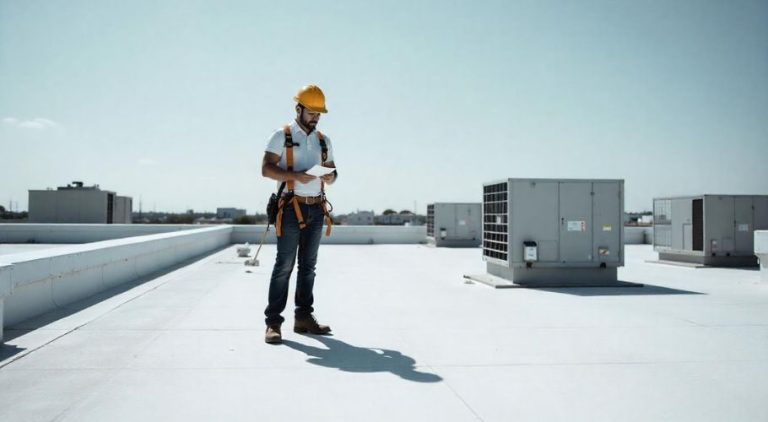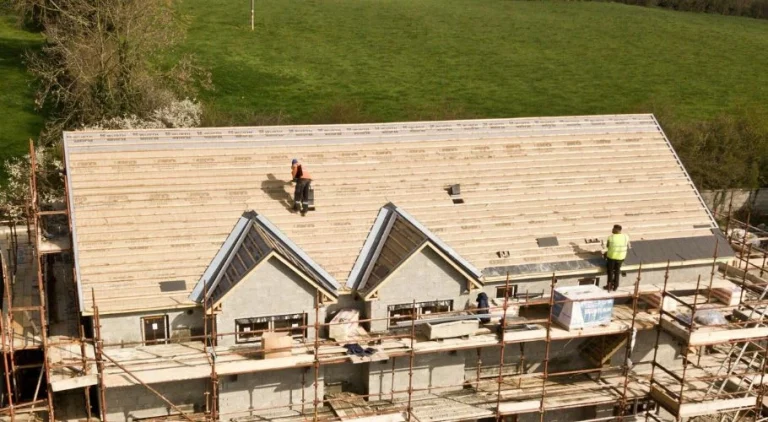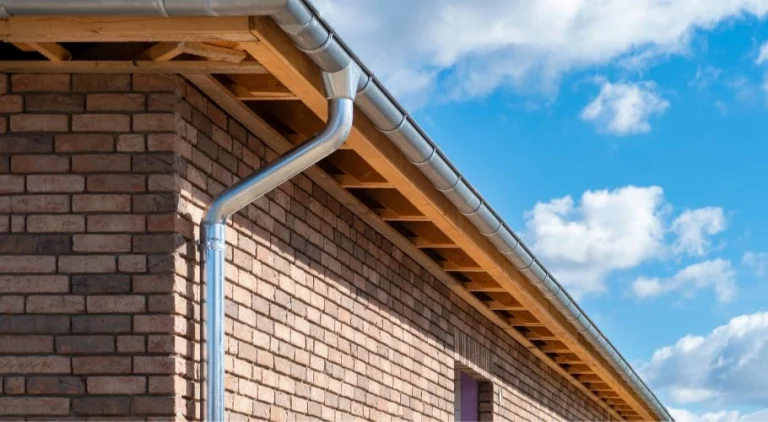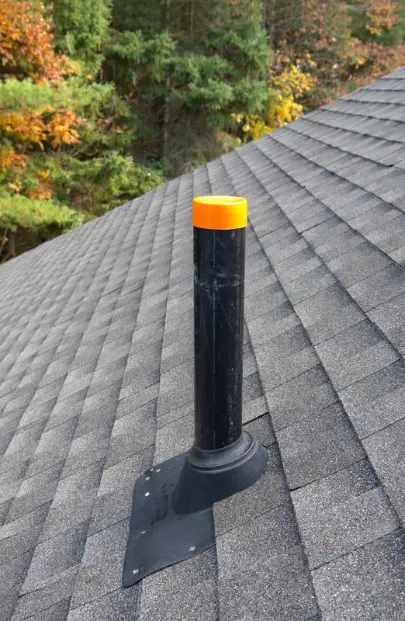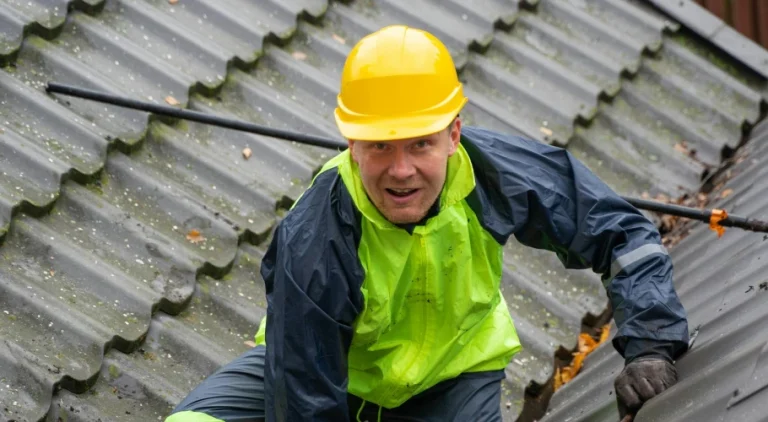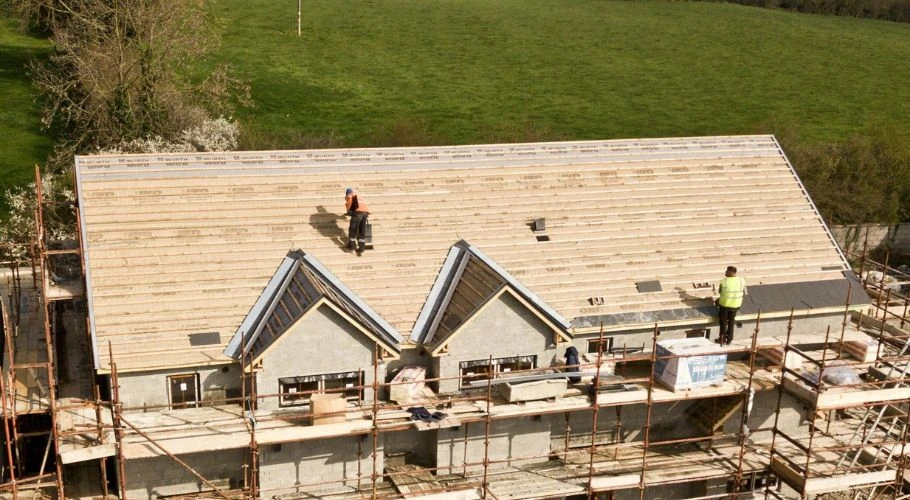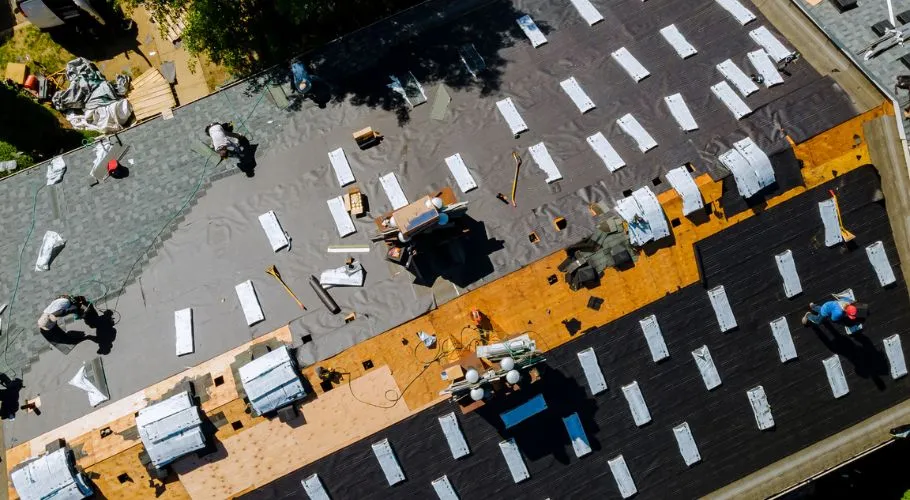
Roofing Professionals Reveal: Roof Flashing Types for Your Home
Welcome to Robbins Roofing, your trusted partner for roofing solutions in Oklahoma. Within every roof system, components like roof flashing play a crucial role in protecting your home from the elements. Although often overlooked, these essential elements effectively channel water away from vulnerable areas, contributing to the longevity and reliability of your roof. From managing water flow around chimneys to safeguarding the edges, flashing is a fundamental feature that boosts your roof’s durability.
Related Article: Emergency Roof Repairs: What You Need to Know
In this blog, we’ll get into the various types of roof flashing and their essential role in fortifying your roof system. Whether you’re curious about styles such as counter flashing and apron flashing or interested in the materials involved, we’re here to provide insights. This understanding empowers you to make informed decisions and appreciate the critical role these roof features play.
Explore this detailed guide with us and discover the importance of incorporating the right roof flashing into your home’s design. As roofing professionals, Robbins Roofing is committed to offering expert advice and a welcoming approach to helping your roof remain resilient and effective.
Key Roof Flashing Types
Understanding the various types of roof flashing is essential to maximizing your roof’s lifespan and functionality. Each type serves a specific purpose and is best suited for particular areas of your home. Here’s a deeper dive into some of the most important flashing types and their advantages:
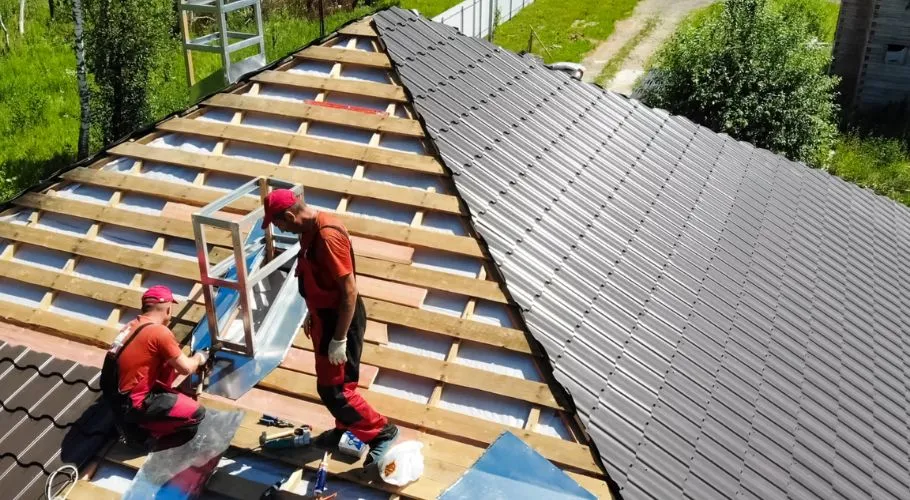
Counter Flashing
Counter flashing works in tandem with base flashing to form a robust waterproof seal, especially in areas requiring layered defense.
Particularly effective around vertical surfaces like chimneys and walls, where water diversion is critical.
Prevents water from seeping into joints between the roof surface and vertical structures, minimizing structural damage.
Most effective when professionally installed with exact alignment to assure top performance.
Benefits include a longer lifespan for roofing materials and better protection against costly water damage, maintaining your home’s integrity.
Apron Flashing
Ideal for lower roof edges and areas beneath dormer windows where they meet vertical walls, providing seamless integration.
Designed to redirect water onto the roof surface, preventing infiltration into critical junctions and intersections.
Helps prevent potential leaks and maintains the integrity of the roofing system by acting as a protective barrier.
Suitable for homes with varied roof designs, offering reliable protection where roof sections converge, adding durability and function.
Step Flashing
Crafted for roof edges intersecting with walls or chimneys, using a layered “step” design alongside wall flashing for comprehensive protection.
Directs water efficiently away from critical vertical junctions, crucial in preventing leaks at roof-wall interfaces.
Versatile and adept at water management, significantly reducing the risk of leaks by effectively channeling water away.
Excellent for complex roof designs featuring multiple chimneys or sidewalls, providing protection where different surfaces meet.
Valley Flashing
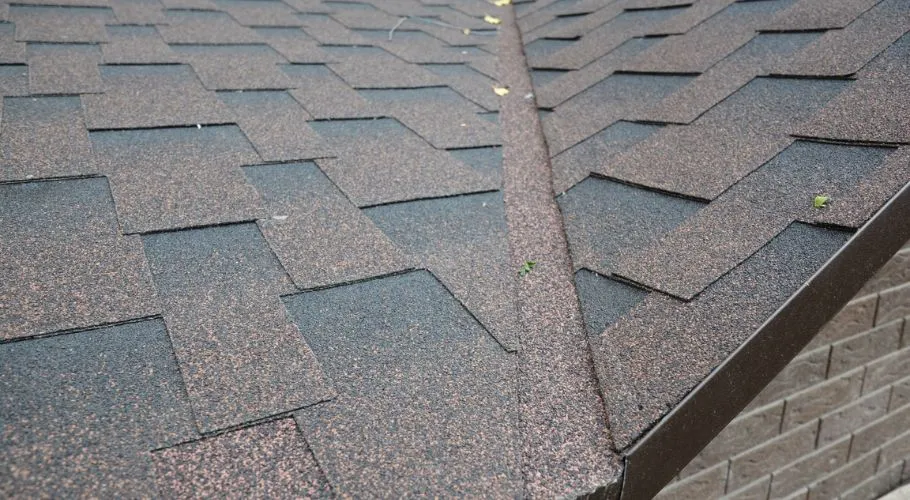
Essential for roof valleys where two roof planes meet, serving a vital role in promoting efficient water drainage.
Helps channel rainwater into gutters, preventing pooling that could cause erosion, leaks, or weight-related stress on the structure.
Made from durable materials like galvanized steel or aluminum, engineered to withstand harsh weather conditions and the test of time.
Strategically placed to maintain the structural integrity and visual appeal of the roofing system, crucial for longevity.
Drip Edge Flashing
Installed along roof edges to buffer and protect fascia while guiding water into gutters.
Prevents rainwater from pooling against roofing materials, effectively avoiding wood rot and subsequent exterior water damage.
Especially beneficial for homes experiencing heavy rainfall, as it guides water along a defined path, avoiding undesired accumulation.
Contributes aesthetically to the roof by providing a clean edge and serves as a vital defense against weather-related damage and wear.
Exploring Roof Flashing Materials: Metal, Chimney, and More
Roof flashing is all about directing water away from crucial areas, and picking the right material is key. Metal flashing is a popular choice, known for its strength and versatility, fitting perfectly into places like valleys and edges. Choosing the right material for your chimney flashing is especially important to prevent leaks where the chimney and roof meet. Whether you love the timeless look of copper or prefer the reliability of steel, understanding these materials will help keep your roof in top shape. Let’s explore these to find what’s right for you.
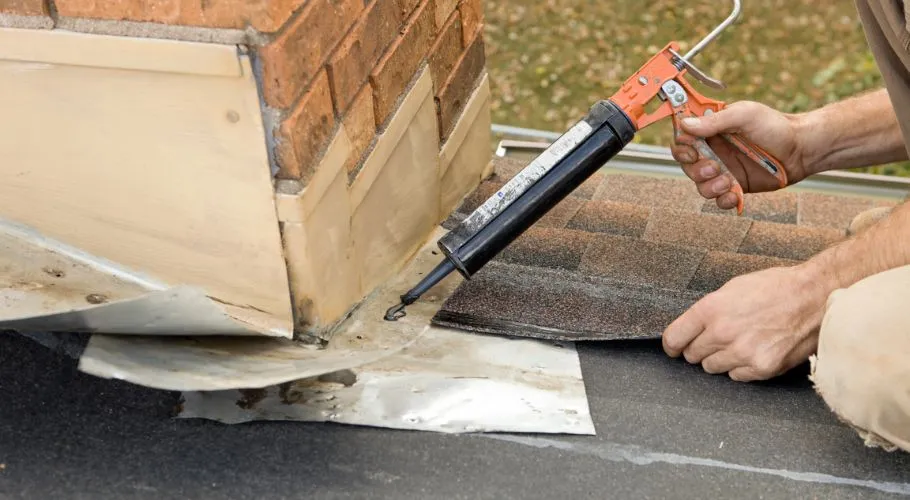
Aluminum Flashing:
Characteristics: Aluminum is a lightweight metal, making it easy to handle and install. It is known for its flexibility, allowing it to be shaped and molded to fit various roof features.
Benefits: One of aluminum’s primary advantages is its resistance to rust, which makes it an excellent choice in areas with high humidity or frequent rainfall. Additionally, aluminum can be painted or coated to match the roof or trim color, providing an aesthetically pleasing finish.
Ideal Applications: Aluminum flashing is suitable for most residential roofing applications, particularly in climates where rust resistance is important. It’s often used around chimneys, skylights, and roof valleys.
Copper Roof Flashing:
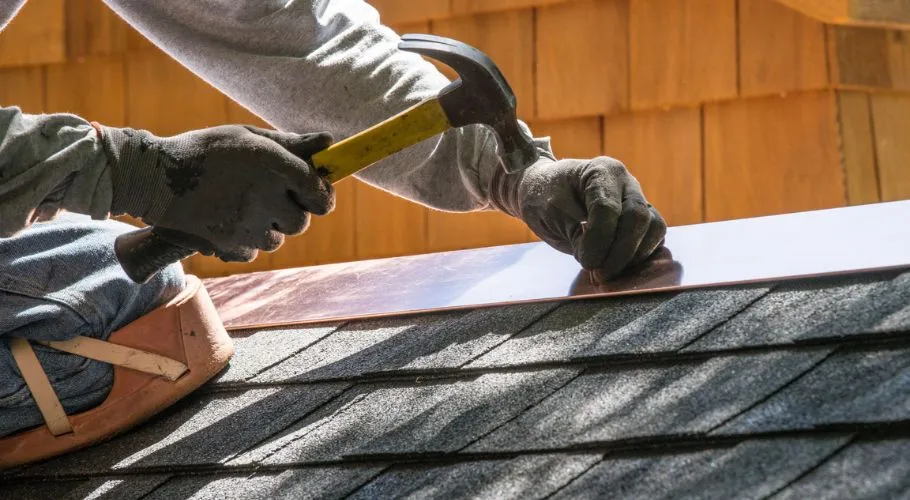
Characteristics: Copper is a durable and visually striking metal that develops a natural patina over time, which can range from brown to a distinctive green hue.
Benefits: Copper’s resistance to corrosion is unmatched, and it can last for many decades, often outlasting the roof itself. Its aesthetic qualities make it a popular choice for homeowners seeking a premium look.
Ideal Applications: Ideal for high-end residential and historic buildings, copper flashing is often found around chimneys, valleys, and gutters, where both performance and appearance are prioritized.
Galvanized Steel:
Characteristics: Galvanized steel is steel that has been coated with a layer of zinc to help its resistance to rust and corrosion.
Benefits: This material is strong and cost-effective, offering a durable solution for those who need a robust flashing option. It provides a good balance between cost and longevity.
Ideal Applications: Galvanized steel is frequently used in standard residential roofing applications, such as in valleys and around chimneys. It’s suitable for areas with moderate weather conditions and for homeowners seeking a cost-effective approach.
Lead Flashing:
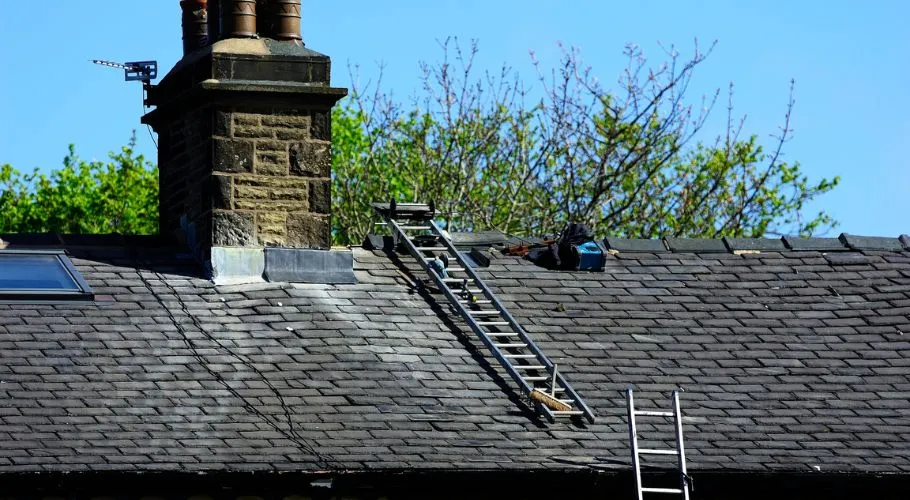
Characteristics: Lead is a heavy, malleable metal traditionally used in roof flashing because of its ability to conform to different shapes.
Benefits: Its pliability makes it ideal for creating watertight seals around complex roof penetrations. However, environmental and health concerns have reduced its popularity.
Ideal Applications: Lead is often used in historical buildings for restoration projects or in areas where its unique properties are required.
PVC or Vinyl:
Characteristics: These are non-metallic materials used in roofing applications where metal might corrode or where a less expensive option is needed.
Benefits: PVC and vinyl flashing are easy to install and resistant to weathering. They offer a budget-friendly option that is not prone to rust.
Ideal Applications: Best used in coastal or industrial areas where metal flashing may be prone to corrosion. PVC and vinyl are often used in residential applications where economic considerations are paramount.
Stainless Steel:
Characteristics: Stainless steel is known for its resistance to corrosion and high durability, making it one of the most robust options for roof flashing.
Benefits: While more expensive, stainless steel is virtually impervious to rust and can withstand extreme weather conditions, chemicals, and saltwater.
Ideal Applications: Stainless steel flashing is often used in commercial applications, coastal areas, and places that demand superior durability and longevity.
Metal flashing, including all these materials, fulfills various roofing needs, and when applied as chimney flashing, it’s vital for preventing roof leaks and protecting structural integrity. Understanding these options helps make sure your roof performs effectively while complementing your home’s style. Let’s delve deeper into each material to find the best fit for your roof.
When to Repair Roof Flashing?
Roof flashing plays an essential role in your roof system by protecting vulnerable areas and directing water away from joints and transitions. However, like any part of your roof, flashing can sometimes need repair to continue performing effectively. Recognizing when to address these issues is crucial to preventing larger problems down the line.
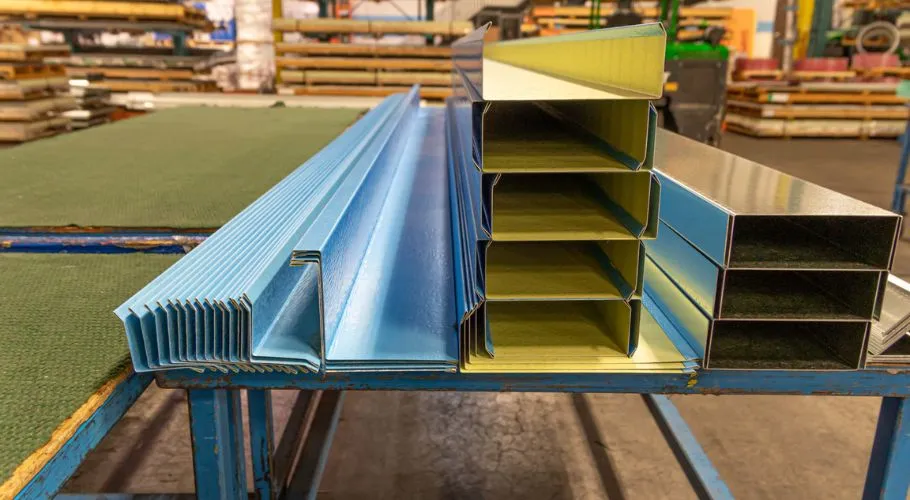
Signs of Roof Flashing Leak
A roof flashing leak is one of the primary indicators that repairs are necessary. If you notice water stains on your ceiling, damp spots on your walls, or leaks during rainstorms, it can signal that your roof flashing is compromised. Regular inspections, especially after severe weather, can help identify potential leaks before they cause significant damage.
The Protective Role of Roof Flashing
Roof flashing protects your home from water intrusion by sealing joints and directing water away from critical areas. When functioning correctly, flashing prevents water from seeping under your roofing materials and causing damage to the roof deck and interior structures. Therefore, maintaining your roof flashing is vital to the longevity of your overall roof system.
When to Seek Repairs
If you observe rust, cracks, or lifting in the flashing material, it’s time to consider repairs. Additionally, if the flashing appears loose or the sealant around it is deteriorating, it could allow water to penetrate the roof surface. Addressing these signs early helps avoid extensive damage and costly repairs.
Regular maintenance and timely repairs ensure your roof flashing remains effective in protecting your home. For reliable assessments and expert repairs, consulting with Robbins Roofing, your trusted professional roofers, is advisable to maintain the integrity of your roof system.
Plumbing Vent Boot Flashing
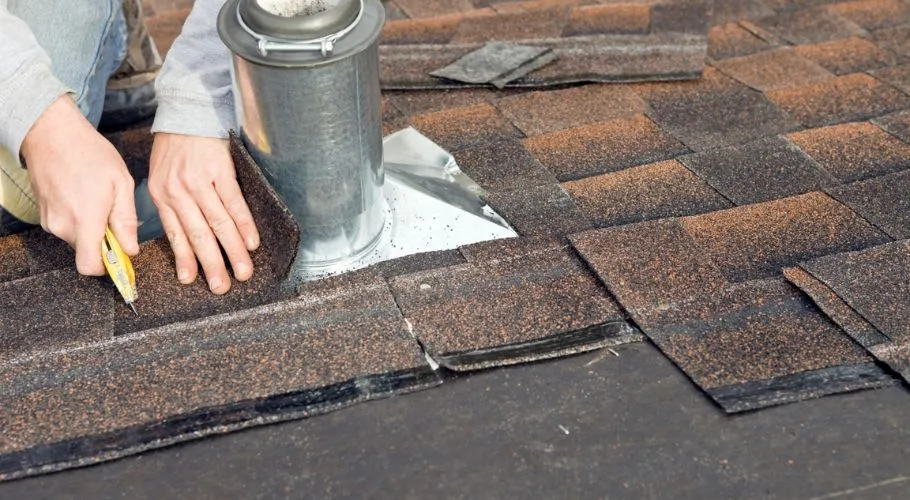
Purpose: Plumbing vent boot flashing provides a watertight seal around vent pipes, which are necessary for allowing sewer gases to escape safely from a plumbing system. These pipes are vertical and protrude through the roof, creating potential entry points for water.
Design and Materials: A vent boot typically consists of a metal or plastic base with a flexible, cone-shaped top that can be trimmed to fit snugly around the pipe. The most common materials used are rubber, silicone, aluminum, and a combination called a “combination boot,” which features a metal base with a rubber or silicone cone.
Installation: During installation, the base of the boot is secured to the roof with roofing nails, so it lies flat against the roof surface. The cone is then fitted over the vent pipe, and sealant is often applied to prevent any leaks.
Functionality: This flashing type prevents water from entering the roof around the pipe, which is crucial in preventing rot and water damage to the underlying roof decking and the interior of the home.
Maintenance: Over time, the rubber or silicone part of the vent boot may crack or degrade due to UV exposure and weather conditions, necessitating regular inspections and timely replacements to maintain its effectiveness.
How do you install counter flashing on a vertical wall?
To install counter flashing on a vertical wall, start by cutting the flashing material (often metal flashing) to the needed size, making sure it can cover the joint fully. Begin at the base and work upwards, securing each piece with appropriate fasteners into the vertical wall. Use roofing cement to seal the edges, improving the waterproof barrier. Counter flashing protects against leaks by covering the top edge of the base flashing, especially around protrusions like chimneys and walls.
What is the purpose of drip edge and gutter apron flashing, and how are they installed?
Drip edge flashing is installed along the edges of the roof to guide water into the gutters and away from the roof decking, protecting the fascia and underlying structures. To install drip edge flashing, it is placed under the first row of shingles and fastened to the roof’s edge. Gutter apron flashing, often used alongside gutters, directs the water into the gutter system. It is installed under the shingles and above the gutter, secured with nails. Both flashings help prevent water damage and prolong the roof’s lifespan.
How does flashing protect against roof leaks, and when should it be repaired?
Flashing acts as a waterproof barrier, especially in areas where roofing materials are joined or intersect, such as around chimneys, plumbing vent boots, and roof surface transitions. Continuous flashing is used in long runs to protect against leaks along walls. Thin metal flashing is flexible and can be used for a variety of applications, providing a custom fit. Repairs should be made when you notice signs of warping, rust, or gaps. Prompt repairs prevent roof leaks and further damage to the roof decking, so that flashing continues to protect your roof effectively. Regular inspections can help determine if repairs or replacements are needed to maintain optimal protection.
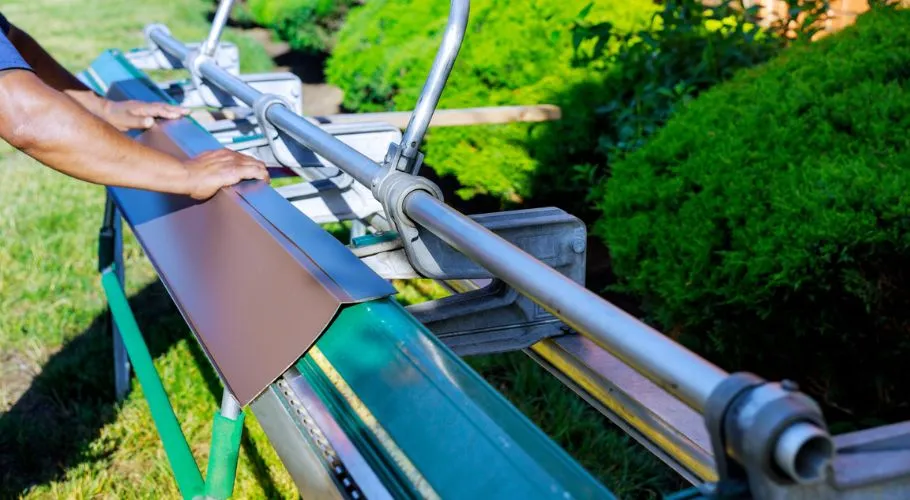
Contact Us for Expert Roof Installation
Feeling confident about your roof flashing needs? Robbins Roofing, proudly serving Oklahoma, is here to help! Whether you’re planning a full roof installation or need some advice on maintaining your flashing, including the right way to install roof flashing, we’re just a call away. Our pros are dedicated to keeping your roof strong and durable, so don’t let the unpredictable Oklahoma weather catch your home off-guard.
Contact us today to schedule a consultation and see how our superior roofing services can work wonders for your home. Give us a call at (405) 376-4466 or mail us at office@robbinsroofinginc.com for any roofing issue!


